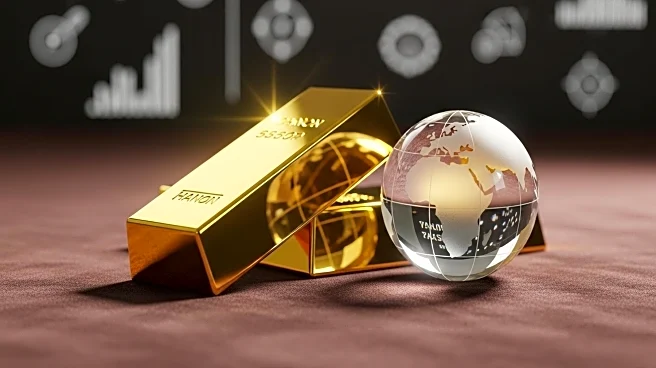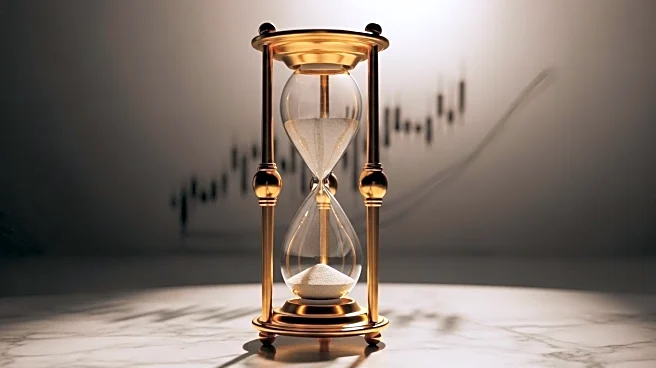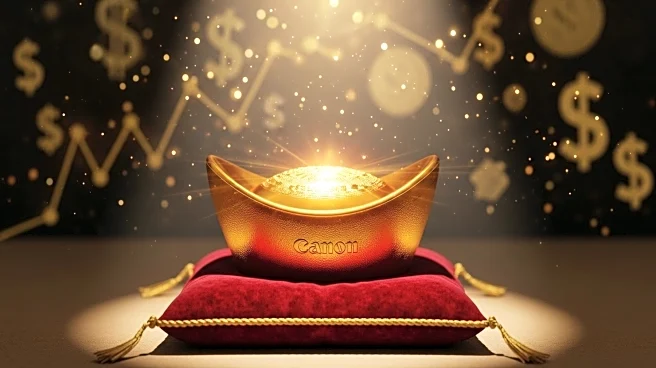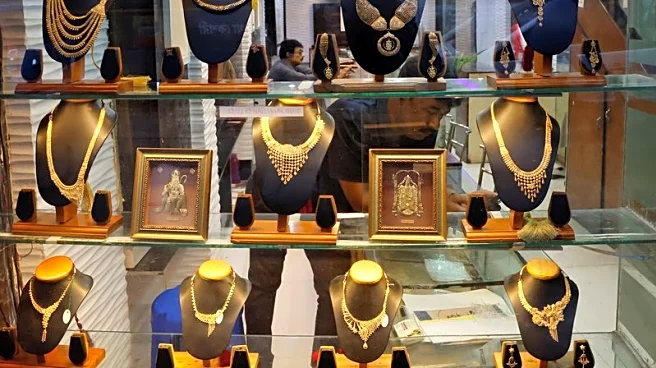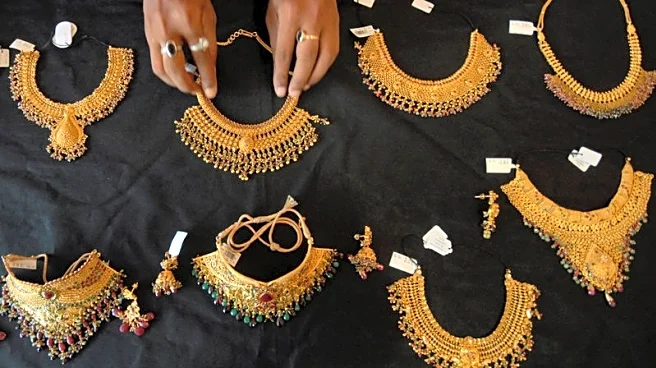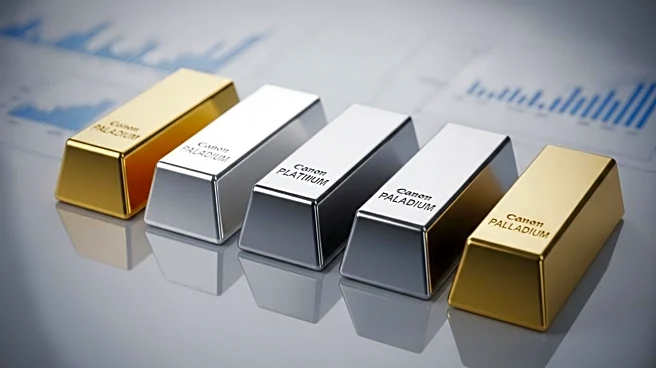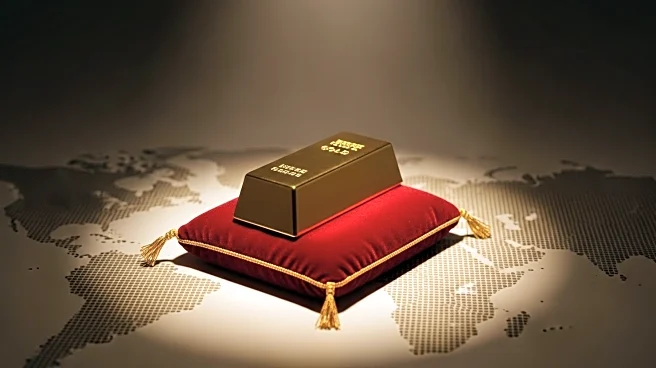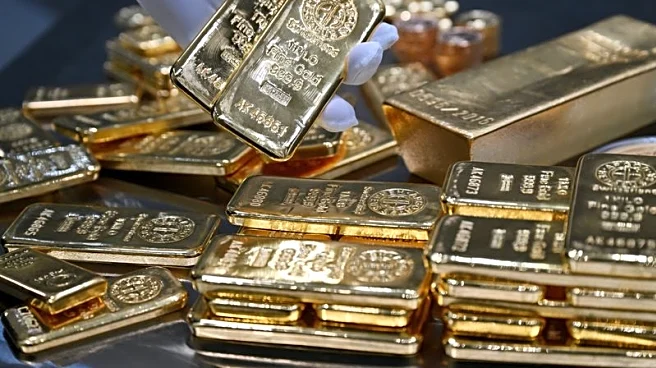What's Happening?
Goldman Sachs has increased its gold price forecast to $4,900 per ounce by December 2026, up from a previous target of $4,300. This revision is attributed to robust Western ETF inflows and sustained central bank purchases. The current market sentiment remains bullish, with gold prices recently surpassing the $4,000 mark, driven by geopolitical tensions and economic uncertainties. Silver and platinum have also seen significant price increases, with silver nearing its highest level in 14 years and platinum experiencing a resurgence due to supply deficits.
Why It's Important?
The upward revision in gold price forecasts by Goldman Sachs highlights the growing demand for safe-haven assets amid global economic and geopolitical turmoil. This trend could have significant implications for investors and financial markets, as gold is often seen as a hedge against inflation and currency devaluation. The increased demand for precious metals may also impact related industries, such as mining and manufacturing, as they adjust to changing market dynamics. Additionally, central banks' continued gold purchases reflect a strategic shift away from dollar-denominated assets, which could influence global reserve currency dynamics.
What's Next?
As gold prices continue to rise, investors and analysts will closely monitor geopolitical developments and economic indicators that could further influence market sentiment. Potential resolutions to ongoing conflicts, such as those in the Middle East and Ukraine, may affect safe-haven demand. Additionally, central banks' monetary policy decisions, particularly regarding interest rates, could impact gold's attractiveness as an investment. Traders are also watching for signs of profit-taking around the $4,000 mark, which could lead to short-term price corrections.
Beyond the Headlines
The surge in gold prices underscores broader economic and geopolitical shifts, including increased resource nationalism and strategic reserve diversification by central banks. These developments may lead to long-term changes in global trade and investment patterns, as countries seek to secure their economic interests amid rising uncertainties. The focus on precious metals also highlights the importance of resource security in a volatile geopolitical landscape, potentially driving innovation and investment in alternative materials and technologies.

